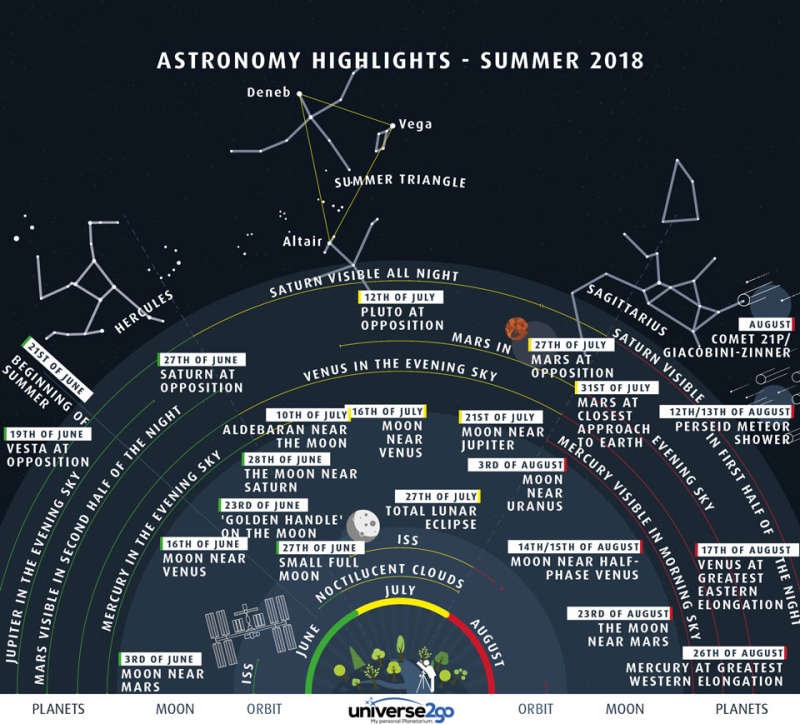Credit & Copyright: Universe2go.com
Explanation:
What can
you
see in the night sky this summer?
The featured graphic gives a few highlights for Earth's northern hemisphere.
Viewed as a clock face centered at the bottom, early (northern) summer sky events
fan out toward the left, while late summer events are projected toward the right.
Objects relatively close to
Earth
are illustrated, in general, as nearer to the cartoon figure with the telescope at
the bottom center -- although almost everything pictured can be
seen
without a telescope.
As happens during any season, constellations appear the same year to year, and meteor showers occur on or
near the same dates.
For example, like last year, the stars of the
Summer Triangle
will be nighttime icons for most the season, while the
Perseids meteor shower
will peak in mid-August, as usual.
Highlights specific to this summer's sky include that
Jupiter will be visible after sunset during June,
and Venus
will shine brightly in the evening sky during July and August.
Saturn and
Mars should be visible during much of this season's night,
with Saturn appearing in the direction opposite the Sun in late June, and Mars at
opposition in late July.
Finally, a
total lunar eclipse should be visible to anyone who can
see the Moon in late July.
1999 2000 2001 2002 2003 2004 2005 2006 2007 2008 2009 2010 2011 2012 2013 2014 2015 2016 2017 2018 2019 2020 2021 2022 2023 2024 2025 |
Yanvar' Fevral' Mart Aprel' Mai Iyun' Iyul' Avgust Sentyabr' Oktyabr' Noyabr' Dekabr' |
NASA Web Site Statements, Warnings, and Disclaimers
NASA Official: Jay Norris. Specific rights apply.
A service of: LHEA at NASA / GSFC
& Michigan Tech. U.
|
Publikacii s klyuchevymi slovami:
night sky - nochnoe nebo
Publikacii so slovami: night sky - nochnoe nebo | |
Sm. takzhe:
Vse publikacii na tu zhe temu >> | |
